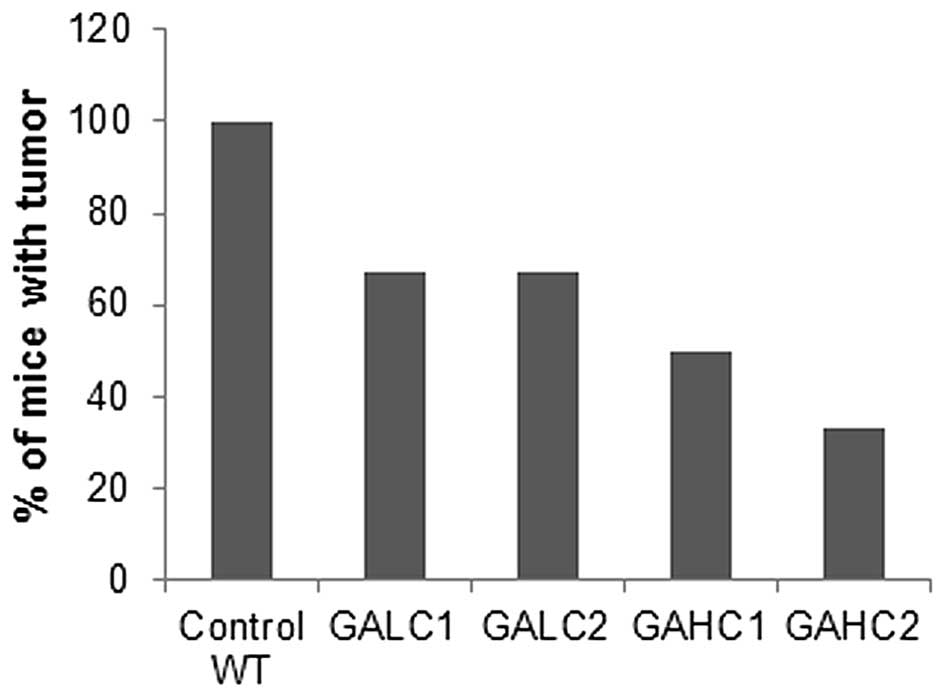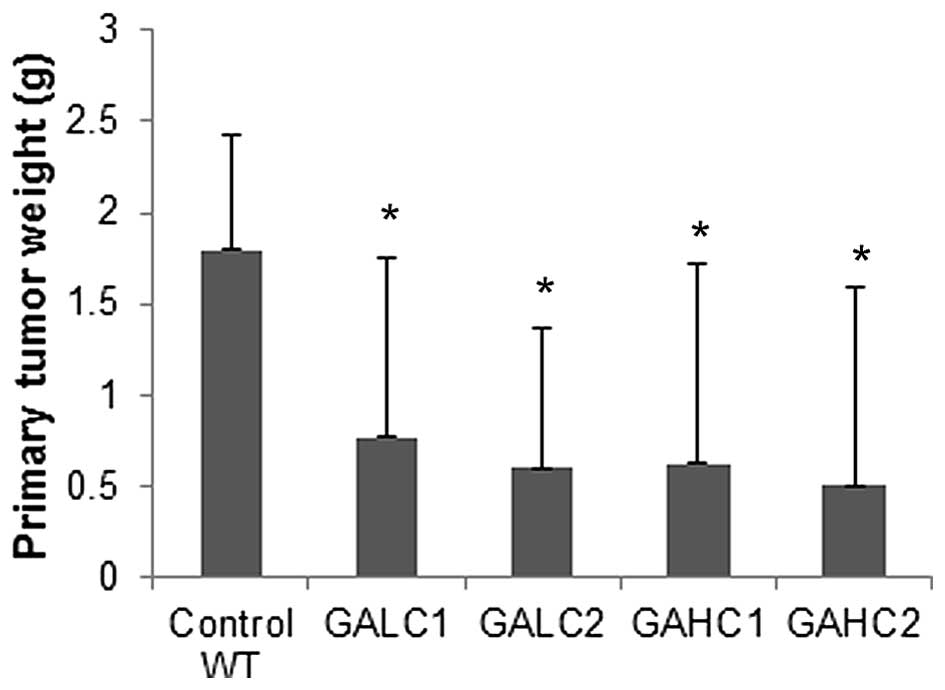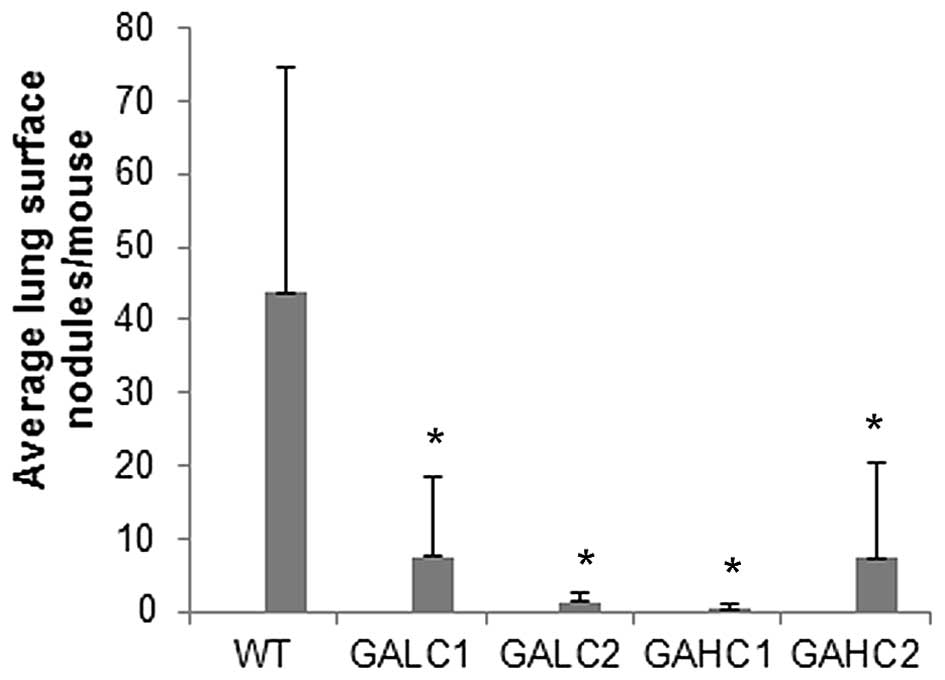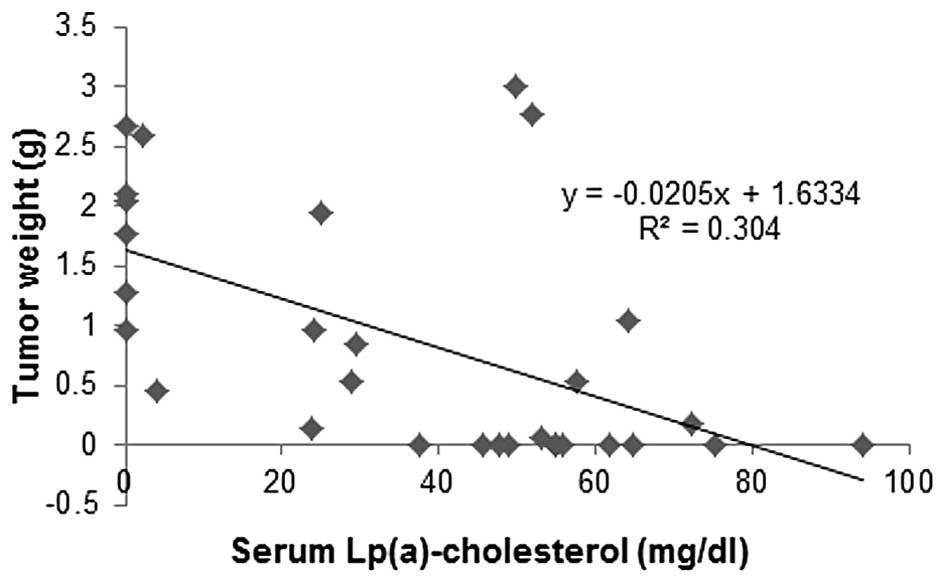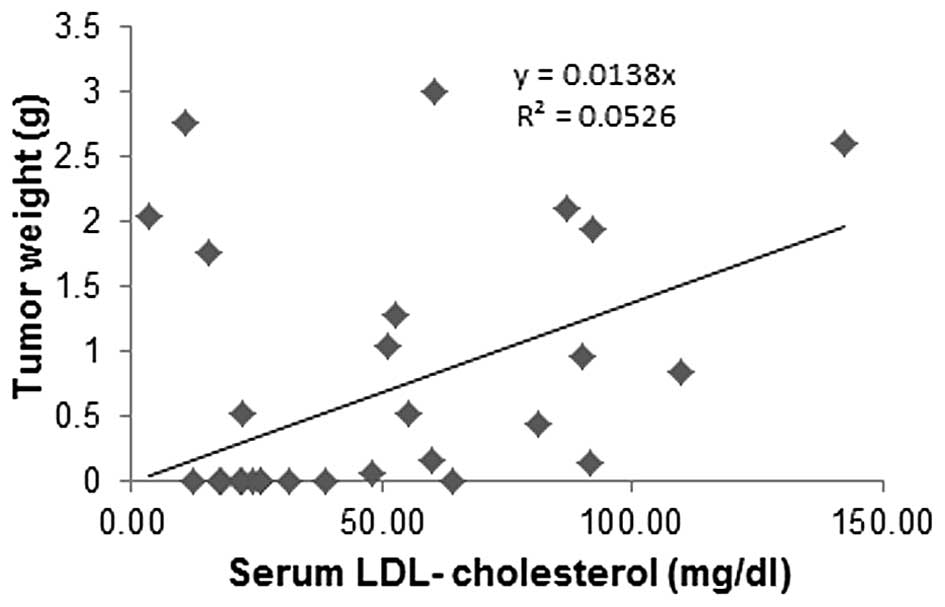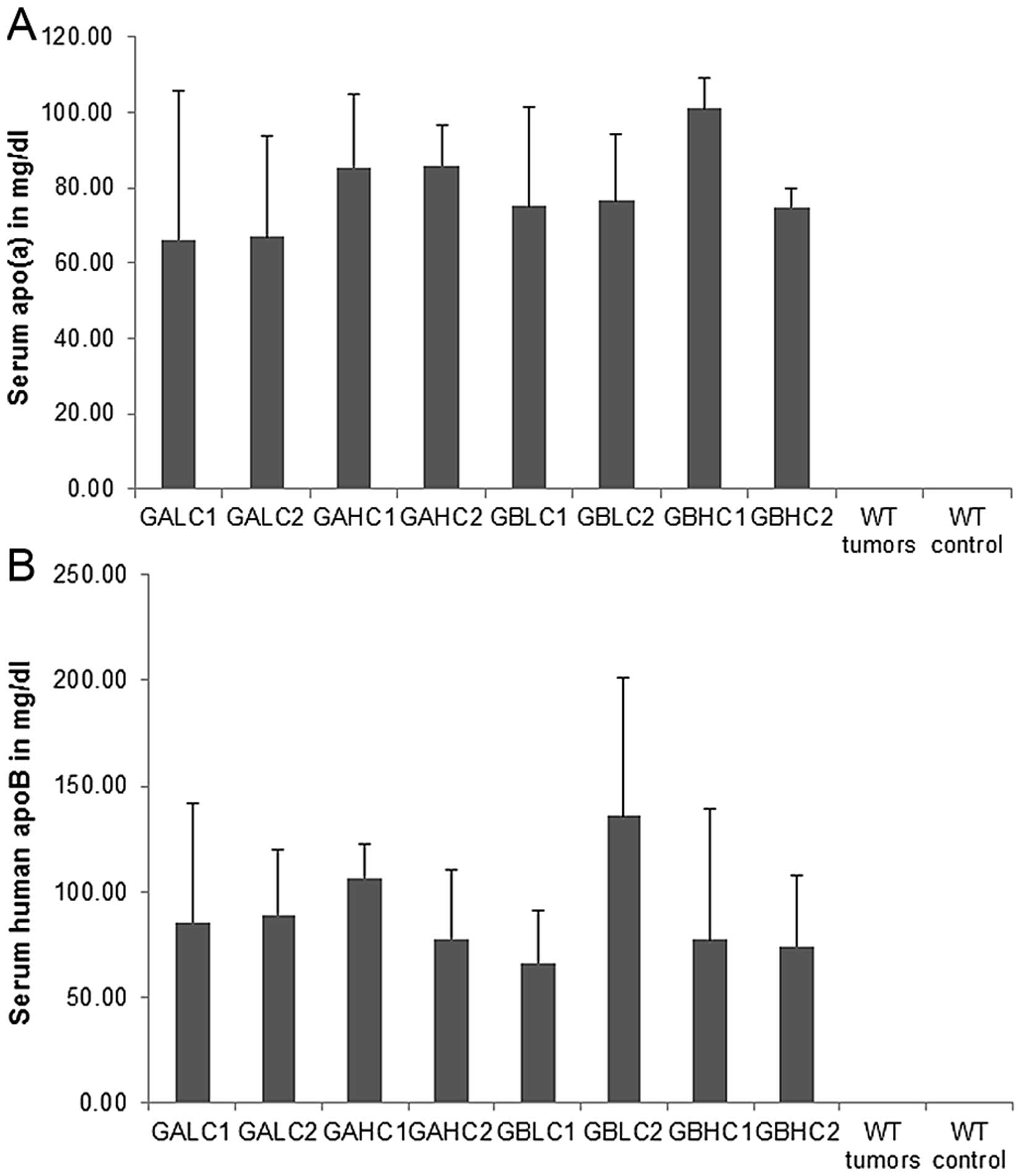Lipoprotein(a) and vitamin C impair development of breast cancer tumors in Lp(a)+; Gulo-/- mice
- Authors:
- Published online on: July 1, 2016 https://doi.org/10.3892/ijo.2016.3597
- Pages: 895-902
-
Copyright: © Cha et al. This is an open access article distributed under the terms of Creative Commons Attribution License.
Metrics:
Total
Views: 0 (Spandidos Publications: | PMC Statistics:
)
Total PDF Downloads: 0 (Spandidos Publications: | PMC Statistics:
)
Abstract
Cancer progression is characterized by loss of extracellular matrix (ECM) integrity, which is a precondition for tumor growth and metastasis. In order to elucidate the precise mechanisms of ECM degradation in cancer we used a genetically modified mouse mimicking two distinct human metabolic features associated with carcinogenesis, the lack of endogenous vitamin C synthesis and the production of human Lp(a). Female Lp(a)+; Gulo(-/-) and control wild-type Balb/c mice without these two metabolic features were orthotopically inoculated with 4T1 breast cancer cells (5x105). The transgenic and control mice were divided into 4 different dietary groups in respect to dietary vitamin C intake: i) low ascorbate intake for 6 weeks; ii) high ascorbate intake for 6 weeks; iii) low ascorbate intake for 3 weeks followed by high ascorbate for 3 weeks; iv) high ascorbate intake for 3 weeks followed by low ascorbate for 3 weeks. After 6 weeks, all wild-type mice developed tumors. In contrast, Lp(a)+; Gulo(-/-) mice developed one third less primary tumors (low ascorbate diet) or no primary tumors at all (high ascorbate diet). Significantly, tumors from Lp(a)+; Gulo(-/-) mice immunostained positively for Lp(a) and their size was inversely proportional to Lp(a) serum levels. The results implicate that Lp(a) may play a role in controlling tumor growth and expansion. The most likely mechanism is the competitive inhibition of plasmin-induced ECM degradation due to the homology of Lp(a) components to plasminogen. The confirmation of this pathomechanism could lead to a universal therapeutic target for the prevention and treatment of cancer.



